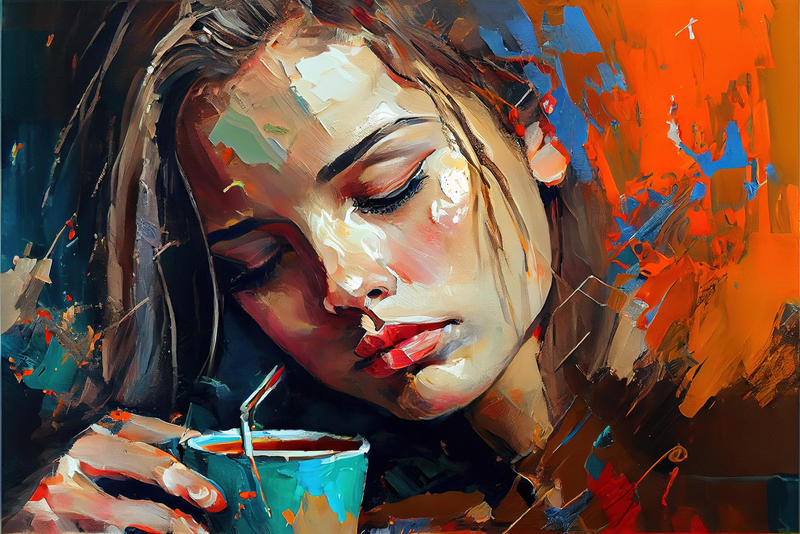The Evolution of Oil Painting A Journey Through History and Technique

Unveiling the Rich Tapestry of Oil Painting
Oil painting stands as a testament to the enduring legacy of human creativity and expression. From its humble origins to its evolution into a revered art form, the history of oil painting is a rich tapestry woven with innovation, technique, and cultural significance. In this extensive exploration, we embark on a journey through time, tracing the evolution of oil painting from its ancient beginnings materiales de los cuadros al óleo por encargo to its contemporary manifestations, while delving into the techniques that have defined its trajectory.
Chapter 1: Origins and Early Techniques
The roots of oil painting can be traced back to ancient civilizations such as Egypt, Greece, and Rome, where artists experimented with various mediums and pigments. In this chapter, we explore the early techniques used in oil painting, including the preparation of pigments, the invention of oil-based mediums, and the emergence of early masterpieces that laid the foundation for the art form’s development.
Chapter 2: The Renaissance Revolution
The Renaissance marked a pivotal moment in the history of oil painting, ushering in a period of unparalleled creativity, innovation, and mastery. In this chapter, we delve into the groundbreaking techniques pioneered by artists such as Leonardo da Vinci, Jan van Eyck, and Titian, who revolutionized the medium with their meticulous attention to detail, use of perspective, and mastery of light and shadow.
Chapter 3: Baroque Brilliance
The Baroque era witnessed a further refinement of oil painting techniques, characterized by dramatic compositions, intense emotion, and dynamic brushwork. In this chapter, we explore the works of Baroque masters such as Caravaggio, Rembrandt, and Velázquez, whose innovative use of chiaroscuro, impasto, and glazing techniques created immersive and emotionally resonant artworks.
Chapter 4: The Rise of Impressionism
The 19th century saw a radical departure from traditional approaches to oil painting with the emergence of the Impressionist movement. In this chapter, we examine how artists like Monet, Renoir, and Degas embraced plein air painting, spontaneous brushwork, and vibrant color palettes to capture the fleeting effects of light and atmosphere, revolutionizing the art world and inspiring future generations of artists.
Chapter 5: Modern and Contemporary Perspectives
The 20th and 21st centuries have seen oil painting evolve in exciting and unexpected ways, as artists continue to push the boundaries of technique, subject matter, and expression. In this chapter, we explore the diverse styles and approaches of modern and contemporary oil painters, from the abstract expressionism of Jackson Pollock to the hyperrealism of Chuck Close, highlighting the enduring relevance and versatility of the medium in the digital age.
Chapter 6: Mastering Techniques Through the Ages
Throughout its evolution, oil painting has been defined by a diverse range of techniques, each reflecting the artistic trends and cultural influences of its time. In this final chapter, we examine key techniques employed by oil painters across history, from underpainting and glazing to alla prima and scumbling, providing insights into how these techniques have shaped the development of the medium and inspired generations of artists.
Conclusion: Celebrating the Legacy of Oil Painting
As we reflect on the evolution of oil painting, we are reminded of its enduring legacy as a medium of boundless creativity, expression, and beauty. From its ancient origins to its modern manifestations, oil painting continues to captivate and inspire artists and audiences alike, serving as a timeless testament to the power of human imagination and ingenuity. As we celebrate the rich history and techniques of oil painting, we honor the artists who have contributed to its legacy and look forward to the continued innovation and exploration that will shape its future.
In this extensive exploration, we’ve traced the evolution of oil painting through history and technique, from its ancient origins to its modern manifestations. By delving into the techniques and innovations that have defined its trajectory, we gain a deeper appreciation for the enduring legacy and timeless beauty of this revered art form. As we celebrate the rich history of oil painting, we are inspired by the countless artists who have contributed to its evolution and look forward to the continued exploration and innovation that will shape its future.